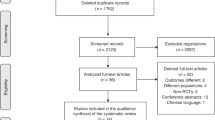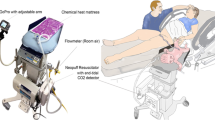Abstract
Objective:
The best practices for the care of a neonate born after a tight nuchal cord have not been defined. As a step toward this, we compared the outcomes of neonates born after a tight nuchal cord vs those born after a loose nuchal cord vs those born after no nuchal cord.
Study Design:
This was a retrospective comparison using electronic data of all deliveries during a 6-year period (2005 to 2010) in a multihospital healthcare system in the western United States. At the time of delivery, each birth was recorded as having a tight nuchal cord, a loose nuchal cord or no nuchal cord. Nuchal cord was defined as a loop of umbilical cord ⩾360° around the fetal neck. ‘Tight’ was defined as the inability to manually reduce the loop over the fetal head, and ‘loose’ as the ability to manually reduce the loop over the head.
Result:
Of 219 337 live births in this period, 6.6% had a tight nuchal cord and 21.6% had a loose nuchal cord. Owing to the very large number of subjects, several intergroup differences were statistically significant but all were judged as too small for clinical significance. For instance, those with a tight nuchal cord had a very slightly older gestational age, a very slightly lower birth weight, a preponderance of male fetuses, primagravid women, singleton pregnancies and shoulder dystocia (all P<0.001). Term neonates with a tight nuchal cord were slightly more likely to be admitted to a Neonatal Intensive Care Unit (6.6% vs 5.9% admission rate, P=0.000). Those with a tight nuchal cord were not more likely to have dopamine administered or blood hemoglobin measured on the first day, nor were they more likely to receive a transfusion or to die. The subset of very low birth weight neonates with a tight nuchal cord, compared with those with no nuchal cord, were of the same gestational age and birth weight, with the same Apgar scores, and were not more likely to have severe intraventrucular hemorrhage, retinopathy of prematurity or periventricular leukomalacia, or to die.
Conclusion:
The presence of a tight nuchal cord is not uncommon, occurring in 6.6% of over 200 000 consecutive live births in a multihospital health system. No differences in demographics or outcomes, judged as clinically significant, were associated with a tight nuchal cord. Thus, we speculate that the best practices for neonatal care after a tight nuchal cord do not involve an obligation to conduct extra laboratory studies or extra monitoring solely on the basis of the report of a tight nuchal cord.
This is a preview of subscription content, access via your institution
Access options
Subscribe to this journal
Receive 12 print issues and online access
$259.00 per year
only $21.58 per issue
Buy this article
- Purchase on Springer Link
- Instant access to full article PDF
Prices may be subject to local taxes which are calculated during checkout
Similar content being viewed by others
References
Collins JH, Geddes D, Collins CL, De Angelis L . Nuchal cord: a definition and a study associating placental location and nuchal cord incidence. J La State Med Soc 1991; 143: 18–23.
Murray M, Huelsmann G . Labor and Delivery Nursing: Guide to Evidence—Based Practice. Springer Publishing: New York, NY, USA, 2008, p 129.
Collins JH, Collins CL, Collins CC . Silent Risk: issues about the human umbilical cord. accessed from: http://www.preginst.com/pucp.html, Accessed 16 April 2012.
Shepherd AJ, Richardson CJ, Brown JP . Nuchal cord as a cause of neonatal anemia. Am J Dis Child 1985; 139: 71–73.
Vanhaesebrouck P, Vanneste K, de Praeter C, Van Trappen Y, Thiery M . Tight nuchal cord and neonatal hypovolaemic shock. Arch Dis Child 1987; 62: 1276–1277.
Schäffer L, Burkhardt T, Zimmermann R, Kurmanavicius J . Nuchal cords in term and post term deliveries—do we need to know? Obstet Gynecol 2005; 106: 23–28.
Rhoades DA, Latza U, Mueller BA . Risk factors and outcomes associated with nuchal cord. A population-based study. J Reprod Med 1999; 44: 39–45.
Verdel MJ, Exalto N . Tight nuchal coiling of the umbilical cord causing fetal death. J Clin Ultrasound 1994; 22: 64–66.
Shrestha NS, Singh N . Nuchal cord and perinatal outcome. Kathmandu Univ Med J (KUMJ) 2007; 5: 360–363.
Jauniaux E, Ramsay B, Peellaerts C, Scholler Y . Perinatal features of pregnancies complicated by nuchal cord. Am J Perinatol 1995; 12: 255–258.
Hankins GD, Snyder RR, Hauth JC, Gilstrap III LC, Hammond T . Nuchal cords and neonatal outcome. Obstet Gynecol 1987; 70: 687–691.
Dhar KK, Ray SN, Dhall GI . Significance of nuchal cord. J Indian Med Assoc 1995; 93: 451–453.
Nelson KB, Grether JK . Potentially asphyxiating conditions and spastic cerebral palsy in infants of normal birth weight. Am J Obstet Gynecol 1998; 179: 507–513.
Clapp III JF, Lopez B, Simonean S . Nuchal cord and neurodevelopmental performance at 1 year. J Soc Gynecol Investig 1999; 5: 268–272.
Cohain JS . Nuchal cords are necklaces, not nooses. Midwifery Today Int Midwife 2010; 93: 46–48.
Greenwood C, Impey L . The association of nuchal cord with cerebral palsy is influenced by recording bias. Early Hum Dev 2002; 68: 15–19.
Jackson H, Melvin C, Downe S . Midwives and the fetal nuchal cord: a survey of practices and perceptions. J Midwifery Womens Health 2007; 52: 49–55.
Jefford E, Fahy K, Sundin D . The nuchal cord at birth: what do midwives think and do? Midwifery Today Int Midwife 2009; 89: 44–46.
Manual of Operations. Release 13.2. Vermont Oxford Network Database: Burlington, VT, USA, 2009, 55 and 74.
Wang Y, Le Ray C, Audibert F, Wagner MS . Management of nuchal cord with multiple loops. Obstet Gynecol 2008; 112 (2 Part 2): 460–461.
Author information
Authors and Affiliations
Corresponding author
Ethics declarations
Competing interests
The authors declare no conflict of interest.
Rights and permissions
About this article
Cite this article
Henry, E., Andres, R. & Christensen, R. Neonatal outcomes following a tight nuchal cord. J Perinatol 33, 231–234 (2013). https://doi.org/10.1038/jp.2012.79
Received:
Accepted:
Published:
Issue Date:
DOI: https://doi.org/10.1038/jp.2012.79
Keywords
This article is cited by
-
Prognostic risk score development to predict birth asphyxia using maternal and fetal characteristics in South Gondar zone hospitals, north West Ethiopia
BMC Pediatrics (2022)
-
The effect of nuchal cord on perinatal mortality and long-term offspring morbidity
Journal of Perinatology (2020)
-
Prevalence and contributing factors of birth asphyxia among the neonates delivered at Nigist Eleni Mohammed memorial teaching hospital, Southern Ethiopia: a cross-sectional study
BMC Pregnancy and Childbirth (2019)
-
Nuchal cord and its implications
Maternal Health, Neonatology and Perinatology (2017)
-
The association between umbilical cord abnormalities and the development of non-reassuring fetal heart rate leading to emergent cesarean deliveries
Journal of Perinatology (2015)



